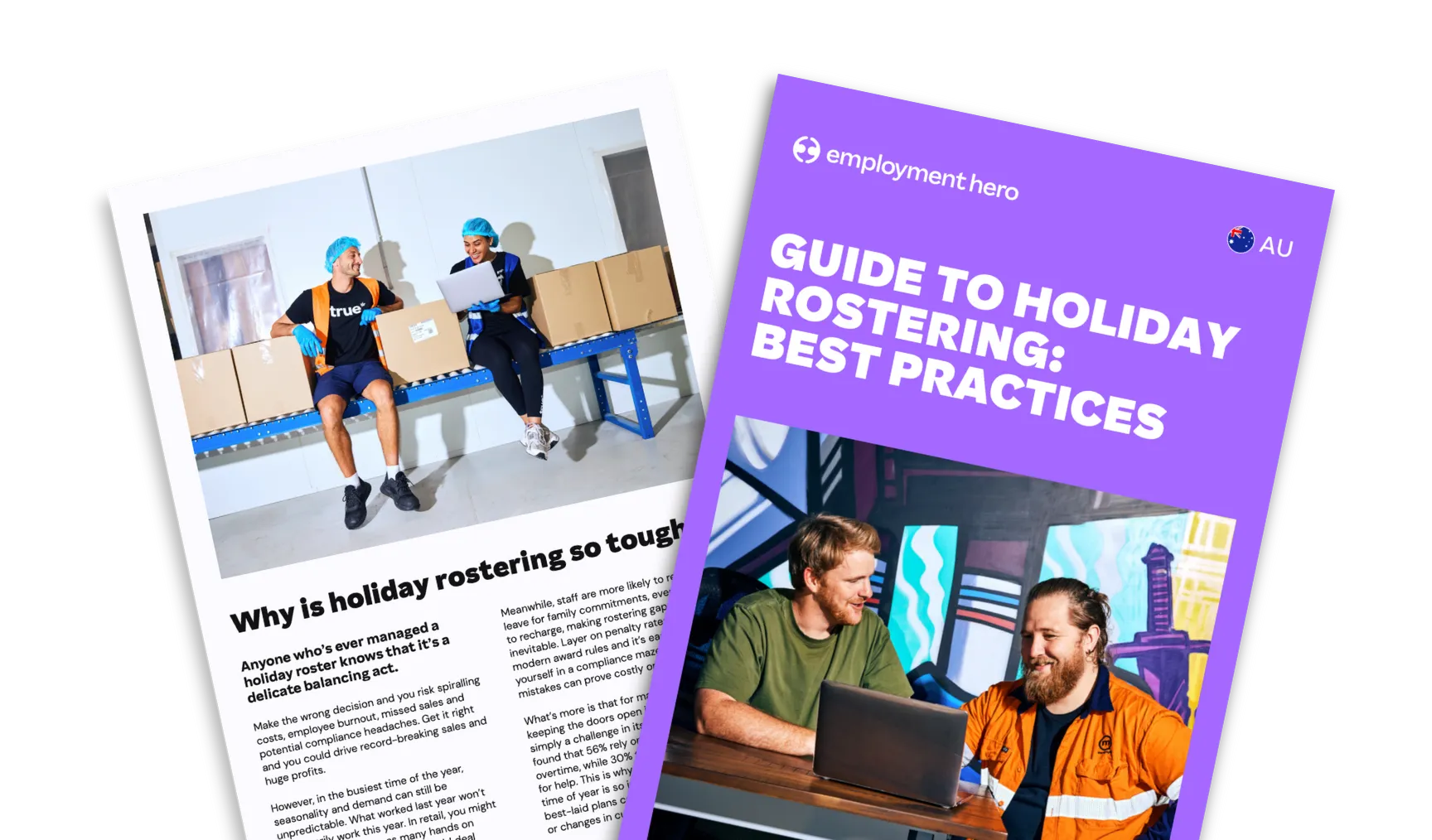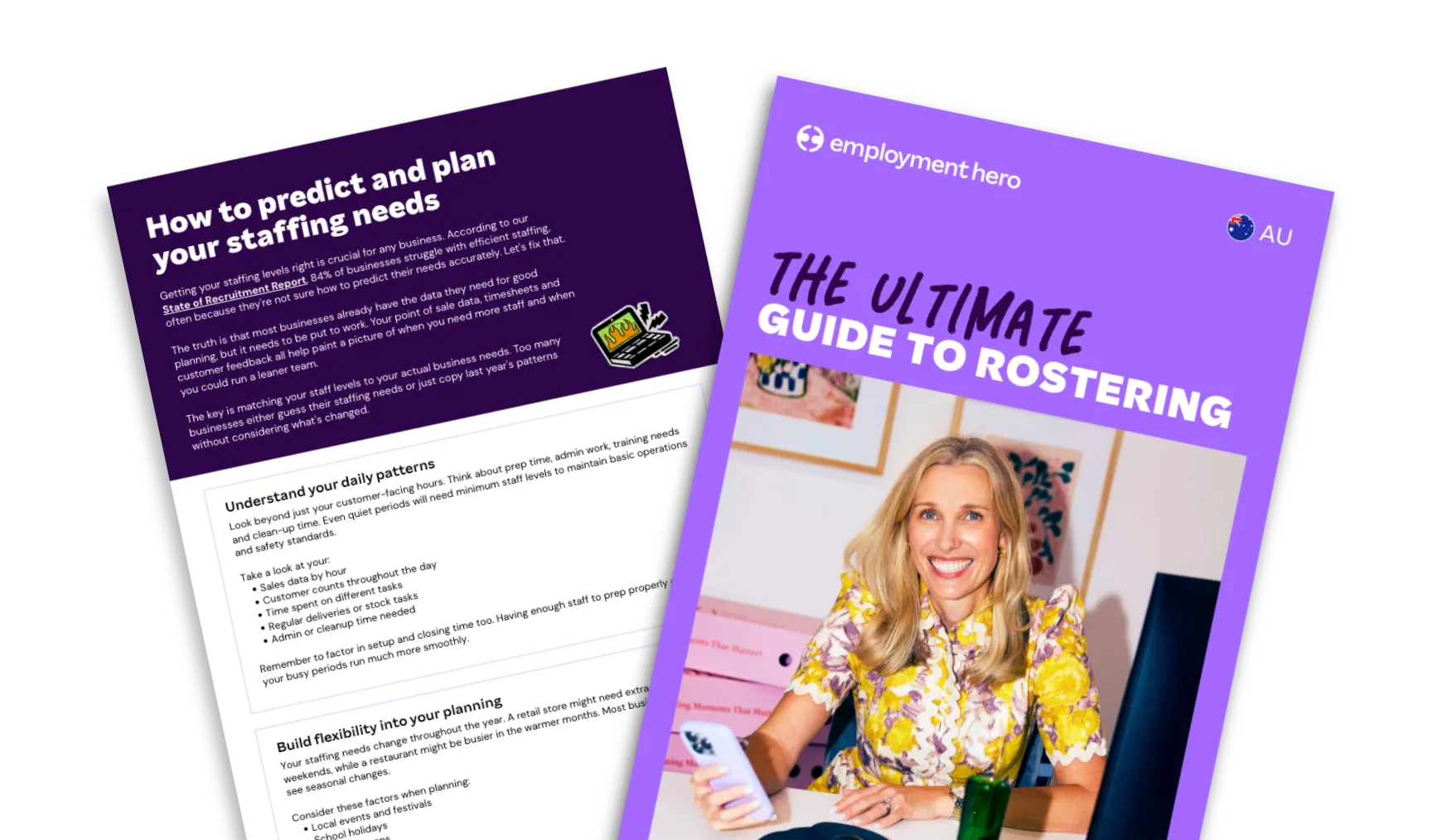Independent contractor agreement: what to include
Published
Independent contractor agreement: what to include

Sometimes businesses need a little extra support to hit their goals. Engaging a contractor can be an effective decision to help you get there. To make the working arrangement work for everyone, it’s essential to have the right contractor agreement in place.
To protect your business, a clear, well-structured agreement helps you manage your compliance obligations and sets out each party’s rights and responsibilities.
When everyone knows what’s expected from the start, you create smoother working relationships and reduce the risk of legal or financial surprises later.
In this checklist, you’ll find all of the essential elements to include in a contractor agreement, so both you and your contractors are set up for success from the very start.
What is an independent contractor agreement?
An independent contractor agreement is a legally binding document that sets out the terms and conditions between a business and a contractor who is not an employee.
This type of agreement covers the scope of work, payment terms, intellectual property rights and contractor responsibilities. It also sets out the relationship so both parties understand their rights and obligations under Australian law.
Unlike an employment contract, a contractor agreement does not provide entitlements such as annual leave, personal leave or redundancy.
Why independent contractor agreements matter in Australia
Formalising your contractor relationship with an agreement is essential because it helps you:
- Meet legal requirements for contractor agreements under the Fair Work Act 2009
- Avoid sham contracting where someone is incorrectly treated as a contractor, but works like an employee
- Reduce the risk of disputes about scope, payment, responsibility or performance
Learn more about managing contractors in our changes to independent contractors guide and our advice on legal requirements when hiring contractors.

Essential sections to include
When drafting an independent contractor agreement, you should include these key sections. You can find the full list of sections to include when you download our template by filling out your details on the right hand side.
Parties and contractor details
- Legal names of both parties
- Contractor ABN
- Business and contact addresses
- Statement of independent contractor responsibilities
Scope of work and deliverables
- Clear description of services
- Timelines, milestones and deliverables
- Performance standards or acceptance criteria
Payment terms
- Fee structure such as hourly rate, daily rate or fixed fee
- Invoicing schedule and payment terms
Duration and termination
- Contract start and end dates
- Renewal terms
- Termination notice periods and grounds for immediate termination
Insurance and indemnity
- Minimum insurance cover required
- Indemnity clauses setting out who is responsible for losses
Independent contractor or employee? What’s the difference?
Knowing how to properly classify an employee and independent contractor is the first step to setting up your independent contractor agreement. And in Australia, the consequences of getting this wrong can be costly.
The Fair Work Commission uses the ‘whole of relationship’ test to check if someone is a genuine contractor.
Employees usually have set hours, receive superannuation and paid leave and follow the direction of the employer. On the other hand, contractors run their own business, set their own hours and carry commercial risk.
To learn more about the difference between contractor vs employee relationship, check out our helpful resources:

Common mistakes to avoid
Many businesses run into trouble by relying on verbal agreements, which are difficult to enforce if a dispute arises.
Another common mistake is leaving out key clauses, such as intellectual property, termination rights or confidentiality obligations, which can create confusion and legal risk later.
Finally, businesses sometimes forget to review a contractor’s classification when the nature of the relationship changes. If a contractor starts working regular hours under your direction, they may need to be reclassified as an employee to stay compliant with Australian employment law.
By avoiding these mistakes and reviewing your contractor agreements regularly, you can protect your business, stay compliant with Fair Work requirements and maintain healthy contractor relationships.
Tips for drafting a strong contractor agreement
- Use a contractor agreement checklist to make sure all key clauses are included
- Tailor the agreement to the type of work or industry
- Have the agreement reviewed by a lawyer or HR advisor (we can help with this)
- Update the contract if the scope, rate or conditions change
Get expert help with contractor agreements
Getting contractor contracts right is a smart business decision. A well-drafted agreement reduces risk, protects your intellectual property and helps give you compliance peace of mind.
Employment Hero’s HR advisory team can help you with drafting an independent contractor agreement, reviewing your existing contracts and understanding contractor vs employee Australia classifications.
Book a demo today to see how Employment Hero can simplify your contractor responsibilities.
FAQs on independent contractor agreements
Yes. Contractors should hold public liability and professional indemnity insurance where relevant.
This depends on the industry, but most will need public liability and professional indemnity insurance.
Yes. Contractors need an ABN and must register for GST if they earn more than $75,000 a year.
The agreement should say whether fees are inclusive or exclusive of GST.
Follow Fair Work’s classification tests, use written agreements and keep records for at least seven years.
No. Contractors are not entitled to annual leave, sick leave or redundancy unless they are employees.
Yes. This is one of the signs they are running their own business.
They are responsible for their own tax and BAS reporting to the ATO.
Yes. Clauses must be reasonable in scope, location and time to be enforceable.
Follow the dispute resolution process in the agreement. This usually starts with negotiation or mediation.
Yes. You should consider legal advice when putting together a contractor agreement, especially for high value or long term engagements.
Disclaimer: The information in this checklist and its associated article is current as at 9 September 2025, and has been prepared by Employment Hero Pty Ltd (ABN 11 160 047 709) and its related bodies corporate (Employment Hero). The views expressed are general information only, are provided in good faith to assist employers and their employees, and should not be relied on as professional advice. The Information is based on data supplied by third parties. While such data is believed to be accurate, it has not been independently verified and no warranties are given that it is complete, accurate, up to date or fit for the purpose for which it is required. Employment Hero does not accept responsibility for any inaccuracy in such data and is not liable for any loss or damages arising either directly or indirectly as a result of reliance on, use of or inability to use any information provided in this article. You should undertake your own research and seek professional advice before making any decisions or relying on the information in this checklist and associated article.
Register for the template.
Related Resources
-
 Read more: Holiday rostering best practices for Australian employers
Read more: Holiday rostering best practices for Australian employersHoliday rostering best practices for Australian employers
Learn how to manage holiday rostering fairly and compliantly. Understand employee rights, requests and obligations when rostering on public holidays.
-
 Read more: The ultimate guide to rostering
Read more: The ultimate guide to rosteringThe ultimate guide to rostering
Learn how to build effective staff rosters that save costs, improve productivity and keep employees happy. Download our free rostering…
-
 Read more: Free company budget template to manage your business spending
Read more: Free company budget template to manage your business spendingFree company budget template to manage your business spending
Take control of your company finances with our free company budget template. Learn how to use it, plus tips on…






















